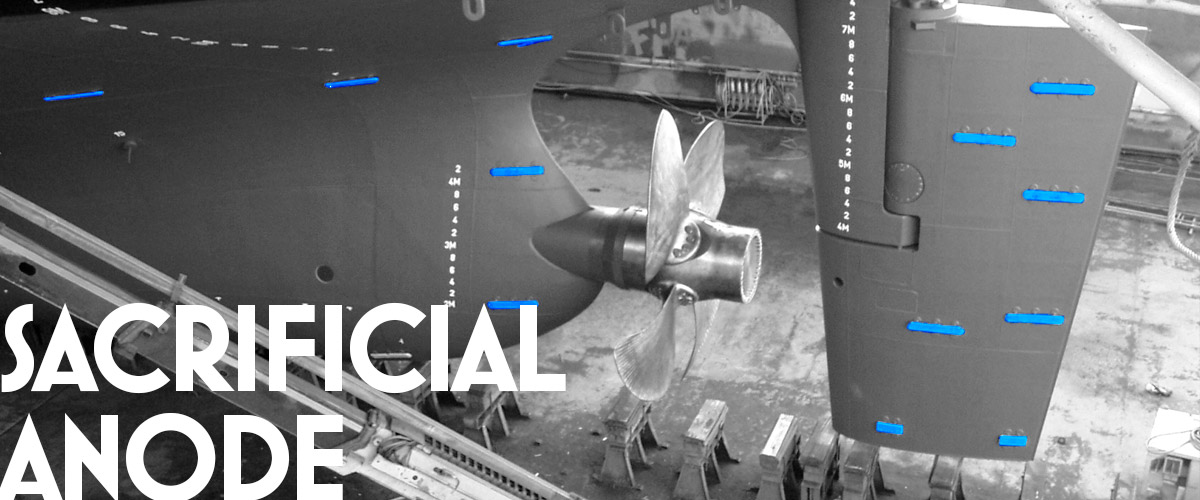
CORROSION PROTECTION
SACRIFICIAL ANODES
Cathodic protection can also be obtained more simply with traditional use of sacrificial anodes. This application involves protecting the steel parts through a mechanical/electrical protection with a galvanically active metal or alloy. When two different metals are electrically connected to each other and submerged in an electrolyte like sea water, the more active metal (the anode) supplies a direct current and dissolves (sacrificial behaviour), thus effectively protecting the other metal of the structure, which acts as a cathode and therefore does not corrode.
Sacrificial anodes are produced by smelting aluminium and doping with indium to obtain a high-quality alloy anode. These products are characterised by their light weight and an elevated supply of direct current associated with the weight of the anode itself. They are inexpensive and function efficiently without any maintenance throughout their lifetime. Furthermore, after installation on the submerged parts, this type of cathodic protection does not require any external electric power supply.
They have various applications for all steel structures of
- Ships
- Piers and palisades
- Offshore structures
- Underground structures
- Tanks
- Electric power plants, refineries and chemical plants
MAIN PLUS
NO CORROSION

ECONOMIC


